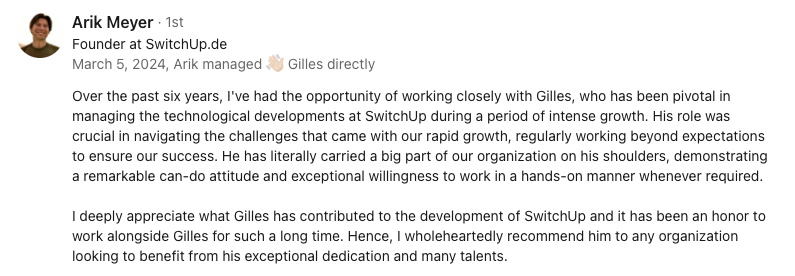Abstract:
Genomic editing, gene therapy, and genetic engineering are rapidly evolving fields transforming biotechnology. CRISPR-Cas9 is a powerful tool for editing genomes, revolutionizing gene therapy and genetic engineering. The Chief Technology Officer collaborates with technology and engineering directors to stay ahead of genetic innovations and leverage them effectively. The future of genetic engineering holds promise in treating genetic diseases, creating new organisms, and crops. The CTO emphasizes ethical consideration and transparency when developing and deploying these technologies. Collaboration and caution are vital in unlocking the full potential of genetics for a brighter future.
Genomic Editing, Gene Therapy, and Genetic Engineering: A CTO's Perspective on the Future of BiotechnologyThe Intersection of Technology and Genetics
As a Chief Technology Officer, I am constantly exploring the boundaries of technology and seeking ways to apply it to real-world challenges. One of the most exciting and rapidly-evolving areas of technology today is in genetics, where breakthroughs in genomic editing, gene therapy, and genetic engineering are transforming the way we understand and manipulate the building blocks of life. At the forefront of this revolution is CRISPR-Cas9, a powerful tool for editing genomes that is making it possible to modify DNA sequences and change how genes function.
While the potential applications of CRISPR-Cas9 are vast, it is important to distinguish it from other related concepts such as gene therapy and genetic engineering. Gene therapy involves replacing, manipulating, or supplementing non-functional genes with healthy ones, often through the use of viruses as vectors. Genetic engineering, on the other hand, involves the direct manipulation of an organism's genes using biotechnology. Both of these fields have been revolutionized by the advent of CRISPR-Cas9, which has made it possible to edit genes with unprecedented precision and ease.
The Role of Directors of Technologies and Engineering
As with any technological revolution, there are significant challenges and opportunities facing organizations in the biotechnology space. As a CTO, I work closely with Directors of Technologies and Directors of Engineering to ensure that our organization is at the forefront of innovation in genetics. This involves not only staying abreast of the latest developments in CRISPR-Cas9 and other cutting-edge technologies, but also ensuring that we have the right people, processes, and infrastructure in place to leverage them effectively.
Directors of Technologies and Directors of Engineering play a critical role in this effort, as they are responsible for overseeing the development and implementation of our technology strategy. This includes everything from identifying and evaluating new technologies to ensuring that our existing systems and infrastructure are able to support our business needs. By working together, we can ensure that our organization is well-positioned to capitalize on the opportunities presented by genomic editing, gene therapy, and genetic engineering, while also managing the risks and challenges that come with them.
The Future of Genetic Engineering
As we look to the future, it is clear that genomic editing, gene therapy, and genetic engineering will continue to be major drivers of innovation in biotechnology. From developing new treatments for genetic diseases to creating new crops and organisms, the potential applications of these technologies are vast and varied. As a CTO, I am excited about the opportunities that lie ahead, and I am committed to ensuring that our organization is at the forefront of this revolution.
Of course, with great power comes great responsibility, and it is important that we approach these technologies with caution and care. This includes ensuring that we are mindful of ethical considerations, and that we are transparent in our efforts to develop and deploy these technologies. By working together, we can unlock the full potential of genomic editing, gene therapy, and genetic engineering, and create a brighter future for all.
In conclusion, as a Chief Technology Officer, I am excited about the potential of genomic editing, gene therapy, and genetic engineering to transform the biotechnology industry. By working closely with Directors of Technologies and Engineering, we can ensure that our organization is well-positioned to capitalize on the opportunities presented by these revolutionary technologies, while also managing the risks and challenges that come with them. Through a combination of innovation, collaboration, and caution, we can unlock the full potential of genetics and create a brighter future for all.
You might be interested by these articles:
- The Future of Genomic Advances
- Revolutionizing Medicine with Genomic Innovations
- Genomics: A New Hope for Europe's Environmental Future
See also:
- Gilles Crofils: Skills, Industries and Markets
- Transforming Customer Service with AI Bots
- IoT Sensor Networks Impact
- Transforming Mental Health with VR
- What Does A Chief Technical Officer Do
- Unlocking Growth: The Power of Local Ecosystems for Social Tech Startups
- Swift's Leap: Mastering Concurrency and Performance





